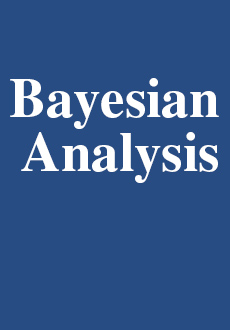Abstract
In spatial statistics, it is often assumed that the spatial field of interest is stationary and its covariance has a simple parametric form, but these assumptions are not appropriate in many applications. Given replicate observations of a Gaussian spatial field, we propose nonstationary and nonparametric Bayesian inference on the spatial dependence. Instead of estimating the quadratic (in the number of spatial locations) entries of the covariance matrix, the idea is to infer a near-linear number of nonzero entries in a sparse Cholesky factor of the precision matrix. Our prior assumptions are motivated by recent results on the exponential decay of the entries of this Cholesky factor for Matérn-type covariances under a specific ordering scheme. Our methods are highly scalable and parallelizable. We conduct numerical comparisons and apply our methodology to climate-model output, enabling statistical emulation of an expensive physical model.
Funding Statement
MK’s research was partially supported by National Science Foundation (NSF) Grants DMS–1654083, DMS–1953005, and CCF–1934904.
Acknowledgments
We would like to thank Mohsen Pourahmadi, Florian Schäfer, Will Boyles, and Joe Guinness for helpful comments and suggestions.
Citation
Brian Kidd. Matthias Katzfuss. "Bayesian Nonstationary and Nonparametric Covariance Estimation for Large Spatial Data (with Discussion)." Bayesian Anal. 17 (1) 291 - 351, March 2022. https://doi.org/10.1214/21-BA1273
Information





